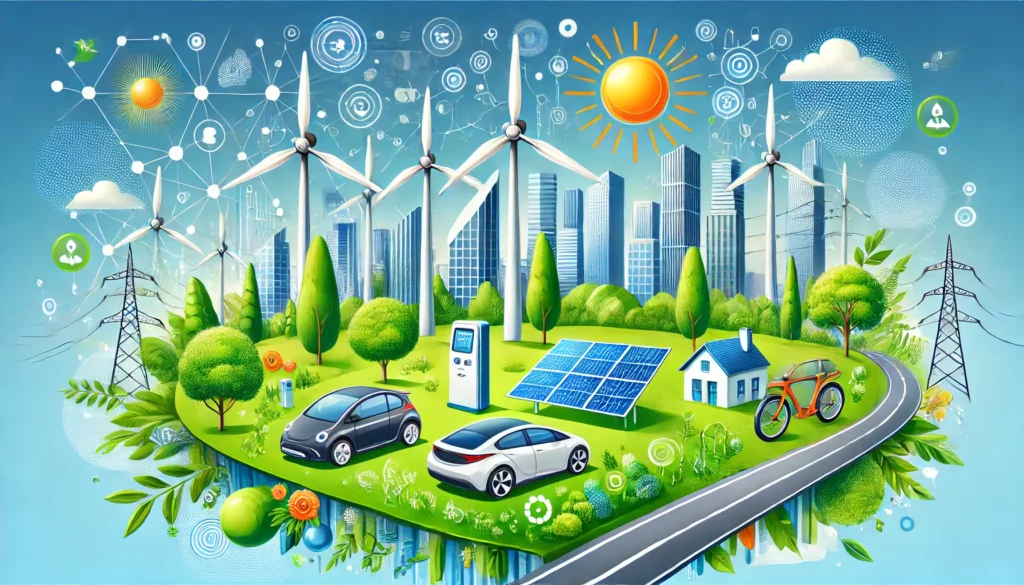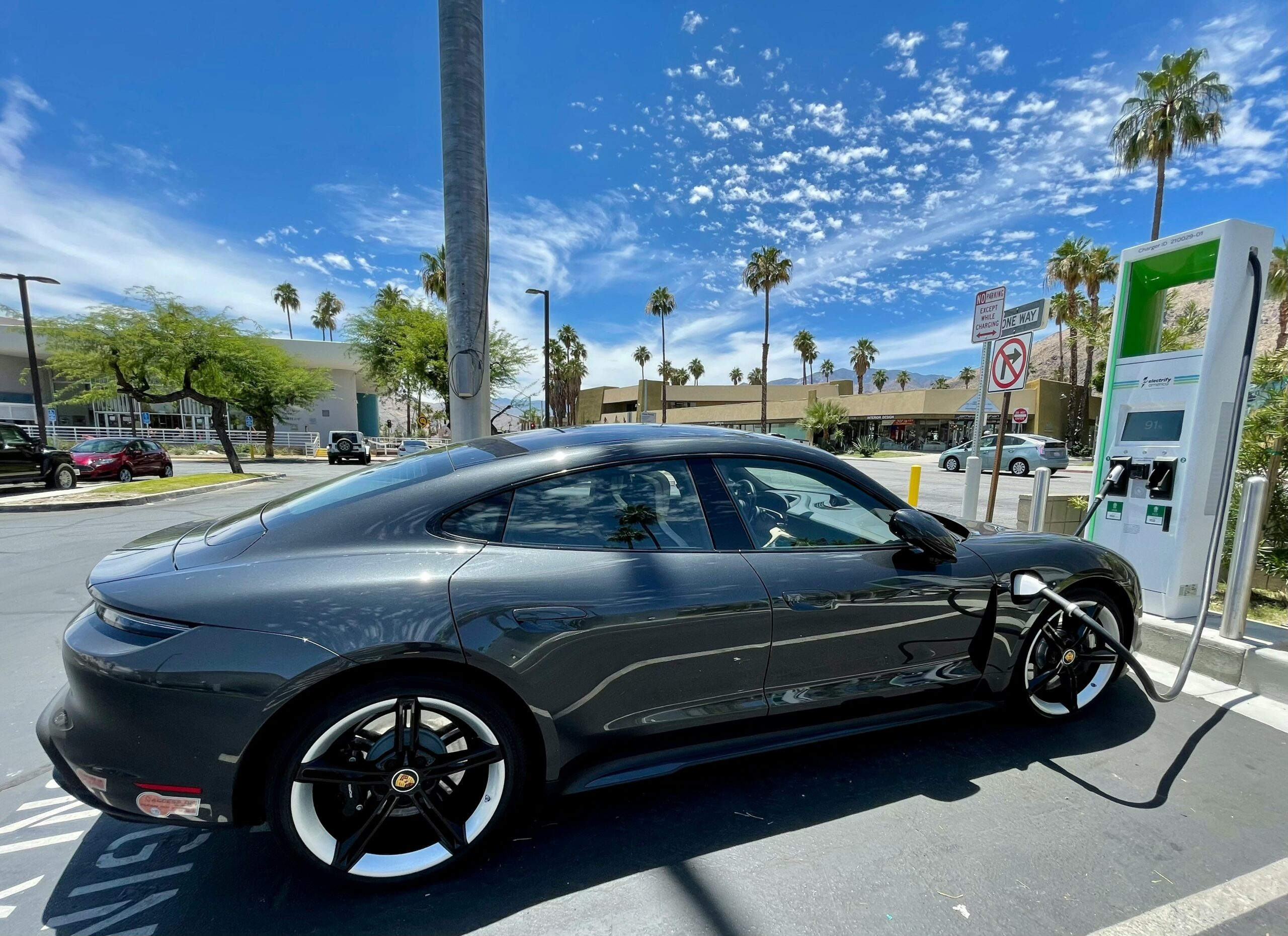A little over a decade ago, it looked like clean tech was a goner. Once a promising industry teeming with innovation and attracting heaps in investment, it all might have been too good to be true; around the turn of the 2010s, fracking sunk oil prices, newfangled tech didn’t live up to its promises, and political backing was meagre. But after its plummet from grace, clean technology is back with a vengeance. Now, hardened by the lessons of its past, it is once again on the rise, and its technologies are becoming increasingly integrated in everyday life. Will the second-time lucky streak last?
Clean Technology: A Brief Overview
Like much industry jargon, the exact definition of clean tech varies depending on who you ask. Generally, though, it describes technology designed to minimize a process’s environmental impact while increasing its efficiency – think electric vehicles, or electricity generated through solar power. The term is often used interchangeably with Greentech, which usually applies to tech that has a net positive impact on the environment, whereas cleantech can be neutral. It’s also different to climate tech, a more focused subsector of Greentech with the goal of reducing emissions. Here, again, the definitions might overlap; for example, electric vehicles (EVs) can be considered both clean tech and climate tech as they bring down the environmental impact of cars, thereby also reducing emissions. As it’s such a hazy term, clean technology encompasses several massive subsectors. Transportation, including electric vehicles – a market worth almost $400 billion in 2023 – is one of them. Renewable energy, another hefty industry, is another, as well as agriculture, industrials and resources, and waste management.
Read also: Top 15 Green Tech Companies & Startups in 2024

The Growing Landscape of Clean Tech Companies
Despite its dark past, the renaissance of cleantech – or cleantech 2.0, as it’s often called – is backed by several new-ish trends. Most obviously, the climate itself has been in increasingly rapid decline; as swathes of the planet sizzle and fry, the consequences – droughts, fires, freakishly strong storms – are wreaking more havoc than ever before. This has not only led to heightened public attention and demand for mitigation, but has also spurred governments to set concrete goals and timelines for limiting global heating. The sense of urgency arising from these trends is something cleantech 1.0 lacked (according to Paul Holland, Managing Director of Corporate Venture Practice at Mch49; as reported by Nicholas Sauvage). As such, cleantech 2.0 is also seeing the world’s mightiest companies getting in on the action, pouring billions – perhaps even trillions – into the technology, even though the fat cats were hugely resistant the first time around.

At the same time, developments in technology have reached the point where many cleantech solutions’ efficiencies begin to stack up to that of their polluting counterparts. Some, predominantly solar power and electric vehicles are now part of the mainstream. Particularly in China – whose state-subsidized solar industry not only survived the cleantech bust, but was also part of the reason for Western solar companies’ downfall – the technology is really taking off, with some comparing the country’s cornering of the cleantech market to Saudi Arabia’s control of oil (as reported by Financial Times).
But cleantech 2.0 – which began around 2018 – is swelling worldwide. 2023 saw $1.77 trillion invested into the ‘low-carbon energy transition’ (according to Bloomberg NEF). The clear winners of the scene are currently the EV and renewable energy subsectors, which received a funding increase of 36% and 8%, reaching $634 billion and $623 billion in investment, respectively. While a lot of the sector is run by established companies and products, startup investment has also been on the up, especially for clean energy; between 2019 and 2022, funding for such startups increased from $1.9 billion to $12.6 billion (according to Oliver Wyman), though it took a dip in 2023.
Clean Tech Companies to Keep Your Eye On
1. Tesla

Tesla is what every clean tech company hopes to become: not just clean, but cool. This US-based company was founded in 2003, a time when electric cars were considered impractical, boring, and geeky. Tesla’s solution was to make them a status symbol; sleek and snazzy on the outside, powerful and high-tech on the inside. The futuristic design made its debut with the company’s first car – the Roadster, a sportscar – in 2008, followed by a handful of less flashy models and the Cybertruck, a controversial stainless-steel pickup. Tesla addressed other troubles with electric cars, such as high costs and limited battery capacity, by streamlining production in its massive Gigafactories and developing a system of Supercharger charging stations. The cars’ popularity soared, and its Model Y became the best-selling car of 2023 – electric or not. Tesla’s success has led to countless other car companies developing electric models of their own, leading to a surge in their use; 18% of cars sold in 2023 were electric, up from just 2% in 2018 (according to the International Energy Agency).
2. Tongwei

China rules the solar industry. Thanks to juicy state investment, the country now produces at least 80% of the world’s solar equipment, and Chinese clean tech companies almost completely saturate lists of top solar manufacturers. Who those are varies depending on the yardsticks used, but one of the heftiest players is Tongwei, founded in 1992. Originally a fish food manufacturer, the company saw the rising importance of clean energy and wanted a part in it. Tongwei already had plenty of land that it used for cultivating its feed; the natural solution, therefore, was to plonk the solar panels onto the aquafarms, which also allowed for cheaper, more efficient farming. In 2022, the company was the largest solar panels manufacturer in the world, shipping roughly 38 gigawatts (GW) capacity of solar modules in that year (over three million solar panels are needed to produce just one gigawatt), and remains the biggest manufacturer of polysilicon, a crucial component of solar panels. Meanwhile, Tongwei remains in the agriculture business, producing 10 million tons of livestock food a year (as reported by Forbes).
3. Vestas

Wind energy is another area where China’s cleantech capabilities reign supreme, accounting for 65% of global wind capacity in 2023 (according to Wood Mackenzie). That year, Beijing-based Goldwind installed 16.3 GW worth of turbines (with one GW equaling the output of roughly 412 turbines), beating out fellow Chinese company Envision and Danish Vestas. Still, it is the latter that remains the largest wind turbine manufacturer in the world; it has 88,782 turbines installed across 88 countries, resulting in an installed capacity of 179 GW. Vestas’s history goes back to the late 1800s; for the first chunk of its life, the company focused on household, agricultural, and industrial equipment before switching to wind energy in the 1970s. 33 years after its first turbine installation in 1979, Vestas reached 50 GW capacity; today, it claims to have avoided the emission of 1.9 billion tons of CO2 through its turbines.
Clean Tech Startups To Watch
Given how far ahead of the game the above clean tech companies are, it’s not surprising that many startups are focusing on different niches – areas that are edgier and trickier to tackle, but nonetheless significant. One such niche is creating a mini-sun on Earth, otherwise known as nuclear fusion. Today’s nuclear plants produce over 20% of the US’s energy through fission, wherein atoms are split. But the process is controversial, since it leaves behind radioactive waste and has the potential to go kaboom. Fusion, meanwhile, involves smushing two atoms together and is virtually an endless and safe source of energy. Sounds dreamy, but pulling it off is a massive feat.
4. Commonwealth Fusion Systems

Reaching the sun-level temperatures needed for it (150,000,000 °C) makes it almost impossible to create an energy surplus. Commonwealth thinks it’s cracked it. The clean tech startup began as a spinoff from MIT in 2018 and has raised over $2 billion to tackle the issue. Its technology hinges on the tokamak: a donut-shaped device in which hydrogen fuel is heated up to the point of becoming plasma. At a certain temperature, the particles’ energy levels are higher than the electromagnetic force keeping them apart, leading them to fuse and release dizzying amounts of energy in the form of heat, which can then be collected (as described by ITER). The plasma is kept in place by a set of magnets located outside the donut, which are key to insulating the heat and saving on energy needed to produce it. Commonwealth’s focus is on creating ‘better and better magnets’ that heighten the process’s efficiency (as reported by CNBC); now, the company claims it’s had a breakthrough developing magnets so powerful they would allow for net positive energy. It hopes to install these on SPARC, a demonstration reactor scheduled to become operational in 2025, as well as its power plant ARC.
5. Electric Hydrogen

Another sector that is seeing growing interest is green hydrogen. Hydrogen is used in countless industries, but its production usually creates emissions. To create so-called green hydrogen, the stuff is made via electrolysis, a process of splitting water into oxygen and hydrogen, with energy sourced from renewable sources.
Electric Hydrogen, a US-based clean tech startup founded in 2020, specializes in electrolysis systems that are compatible with such renewables. The company’s single product is a 100MW electrolysis plant, a standardized and one-size-fits-all design with simplicity and efficiency at the forefront. While a key issue with green hydrogen is its cost – owed both to installation and the higher cost of renewable energy – Electric’s head of EMEA business development Omer Shkeir claims that the all-in cost of for its plants is just $750/kW, compared to an industry average of $2,000/kW for similar technologies (as reported by Hydrogen Insight). That could make its green hydrogen just $0.5/kg more expensive than that produced with traditional methods. Plus, US tax breaks for green hydrogen of up to $3/kg – a major incentive for the industry – could make it even cheaper (as reported by CleanTech). Electric Hydrogen recently became the sector’s first unicorn with a valuation of $1 billion; its first 100MW plant, commissioned by New Fortress Energy, is planned to begin hydrogen production in late 2024.
Read also: Top Green Hydrogen Companies
6. Northvolt

Swedish battery manufacturer Northvolt is a bit of a pioneer; it’s one of the first battery startups to make the big time. Most manufacturers already come into the industry as heavyweights, making it difficult for newcomers to stake their claims (as reported by Techcruch). But Northvolt, a clean tech startup founded in 2015, managed to collect billions in funding from the likes of Blackrock and Goldman Sachs for its plan to manufacture electric vehicle batteries with renewable energy, decreasing their carbon footprint by 90%. Its model appealed to a host of European automakers including BMW and Volkswagen, who placed orders worth €2 billion and €14 billion, respectively; as of 2022, the company had received $55 billion in orders (as reported by Sifted). But Northvolt may have bitten off a little more than it could chew; the BMW order was recently cancelled due to production delays, and VW is allegedly assembling a taskforce to look into whether Northvolt can deliver.
Why Might Companies Be Interested In Investing in Clean Tech Startups?
Though climate change is ramping up, it’s not a sudden passion for the planet that’s causing the world’s largest companies to step up their cleantech efforts. Their increased involvement boils down to business. In addition to rising consumer pressure for climate-friendly practices, there are also governmental incentives. In the US, for example, there are hefty tax breaks for using green hydrogen, nuclear energy, or carbon capture; since these were introduced in 2022 as part of the Inflation Reduction Act (IRA), clean energy development and tech investments in the country surged to $300 billion and $131 billion, respectively. In addition, geopolitical tensions have highlighted the consequences on depending on foreign energy sources. For example, Europe’s energy supply hanging in limbo following Russia’s invasion of Ukraine put the spotlight on its strategic need for independent energy sources, of which clean energy could constitute a significant part. The same principle goes for any country, so it makes sense for companies to be pursuing cleantech. However, while many are developing it themselves, some – like Shell, BMW, or VW – are sourcing tech from startups, which can innovate faster and are unrestrained by bigger companies’ sluggish procedures. This way, the investing companies get to use cleantech without the hassle of developing it themselves but still reap the rewards.
Read also: Top 5 Carbon Capture & Removal Startups in 2024
The Future of Clean Technology
All of these trends paint a promising picture for the future of cleantech. A recent report by the International Energy Agency predicted that if countries keep to their climate pledges, the market for mass-manufactured clean energy technologies alone could be worth $650 billion by 2030. Sure, countries actually carrying out these pledges is a long shot, but the scene certainly seems more robust now than it was during cleantech 1.0; this time, there is widespread governmental and corporate backing, incentives, and clearcut climate goals. Meanwhile, as more countries yearn for energy autonomy and diversification of economy, cleantech makes for a lucrative option.
However, as with any cutting-edge industry, there’s the risk of death by hype; as seen with the first wave, investors overestimating the potential of the sector might lead to them inadvertently tearing the whole thing down. While some mature tech like wind, solar, and electric vehicles are in the swing of things, newer processes like green hydrogen and fusion still need to prove themselves without crumbling at the first whiff of trouble.
Bottom Line
The cleantech sector is stronger now than a decade ago, but the persisting issue of hype highlights just how fragile the cleantech scene still is. Though its entire purpose is to protect the environment – a decades, if not centuries-long endeavor – its execution is still dangerously dependent on transient trends and even single events. For example, a return to office for President Trump in the US could support a rolling back of the IRA and, with it, those sweet tax breaks for cleantech companies – all while bolstering the fossil fuel industry. But those possibilities aren’t ever going away; if cleantech wants to be in it for the long haul, it needs to be acknowledged not just as a current fad, but the new norm. If that doesn’t happen, we’ll probably be asking ourselves the same questions in another decade.








